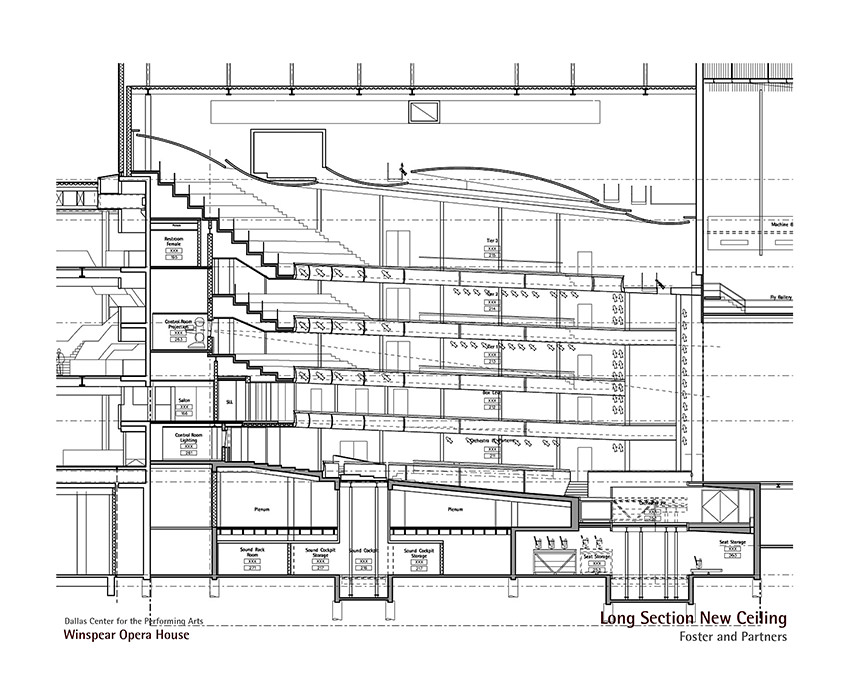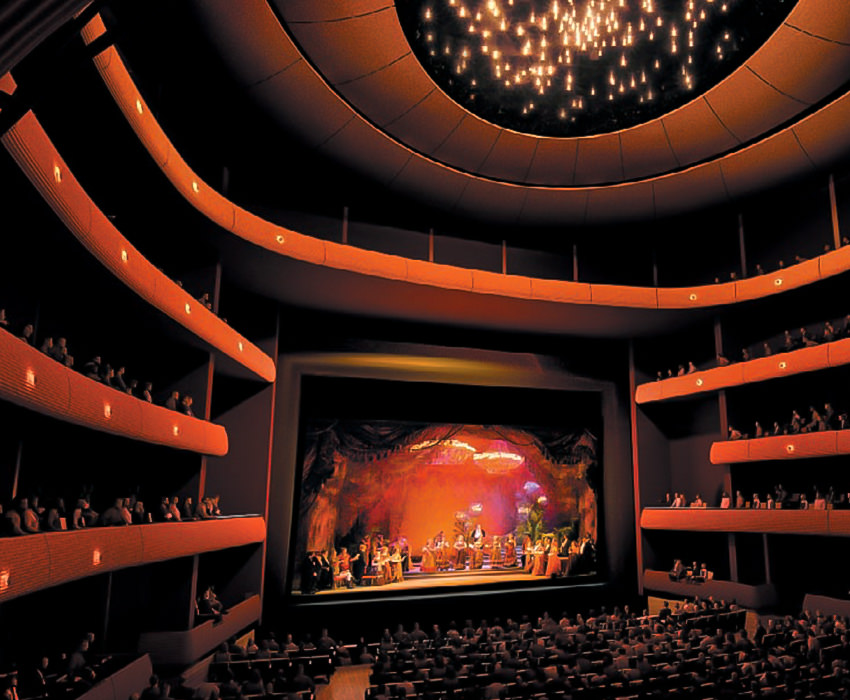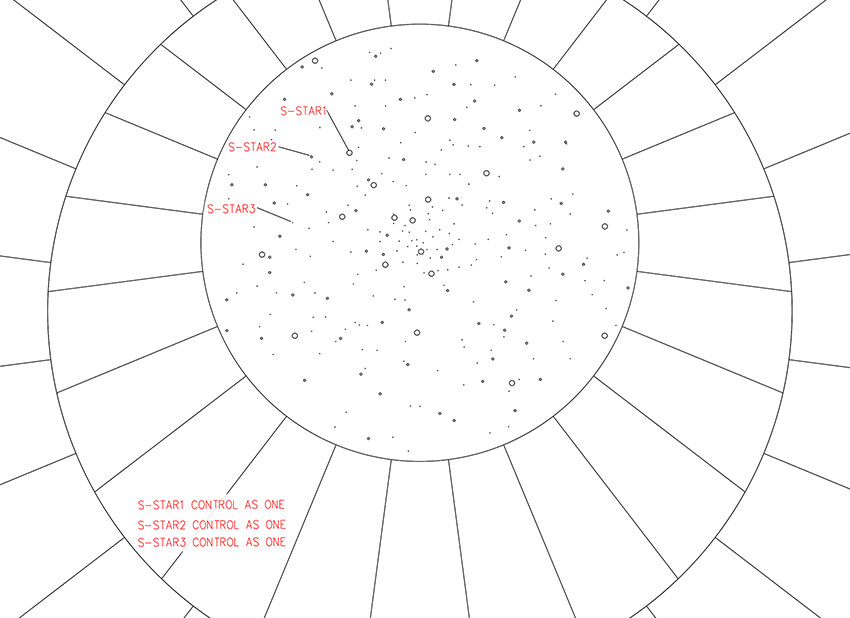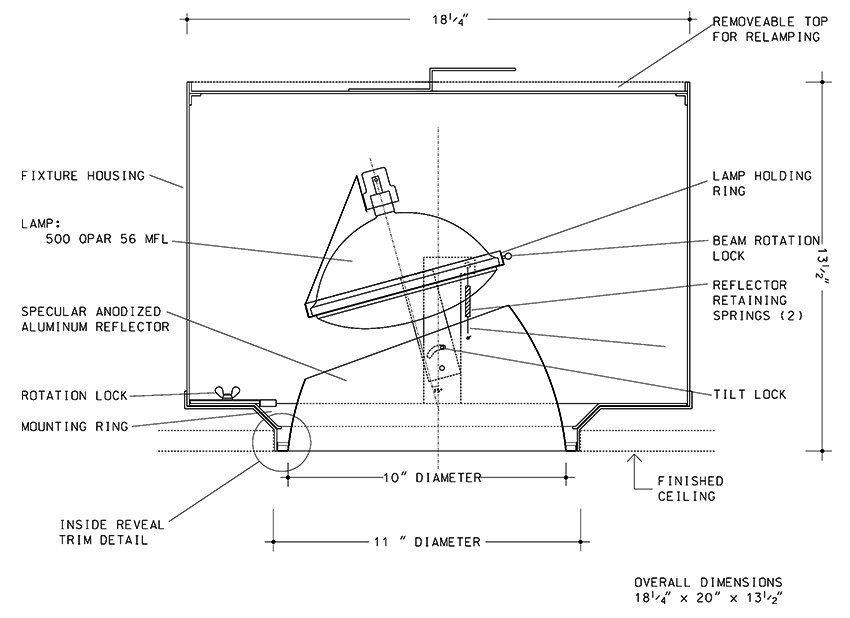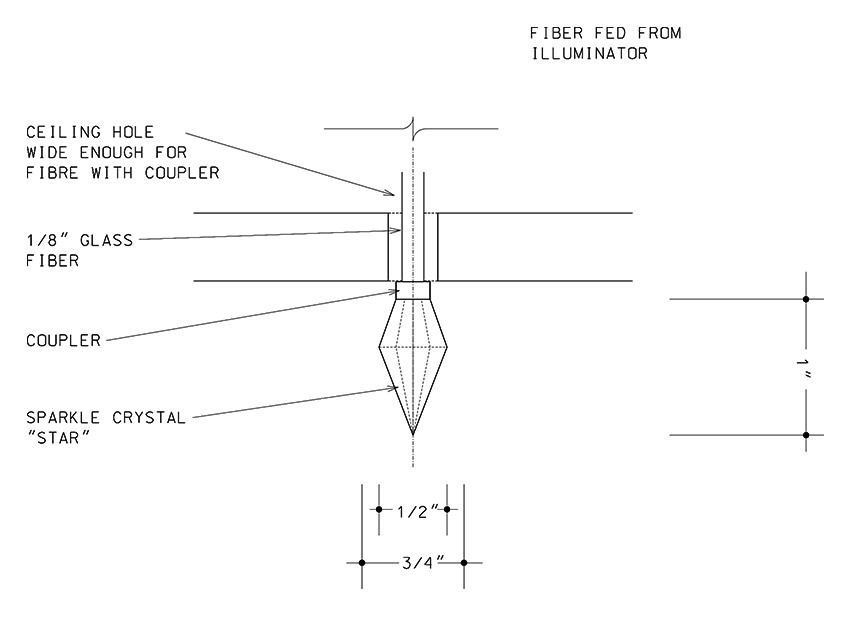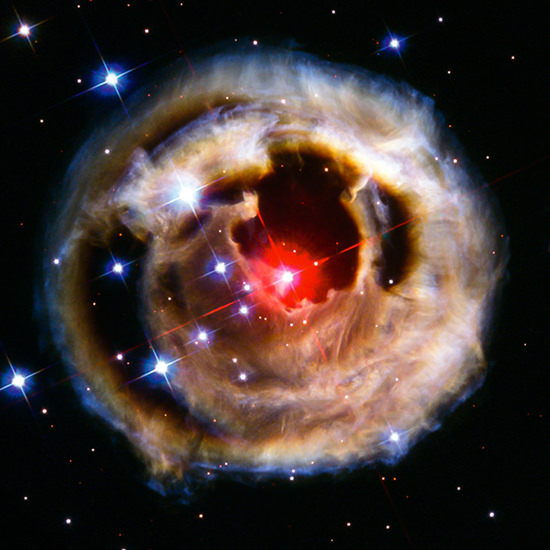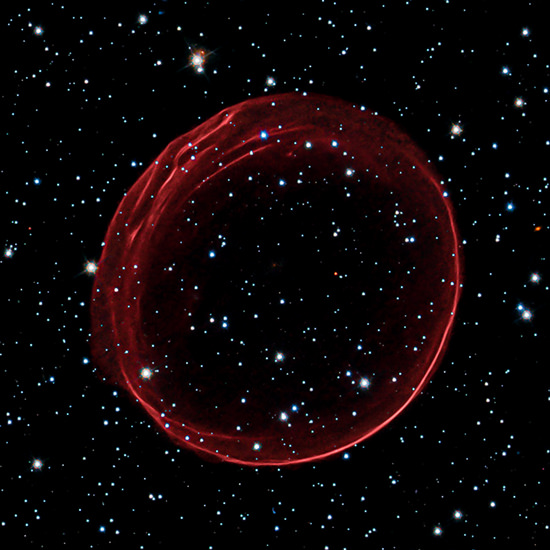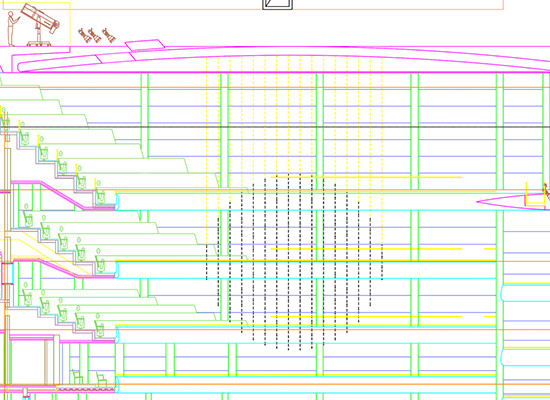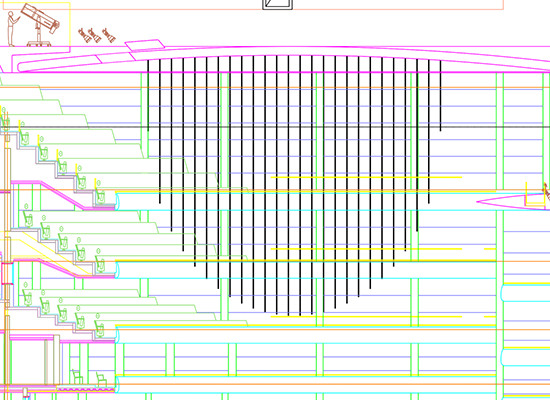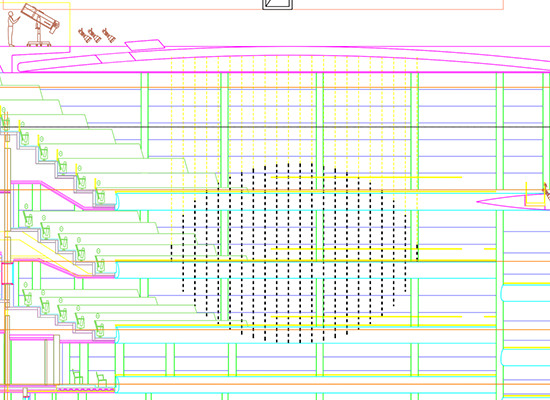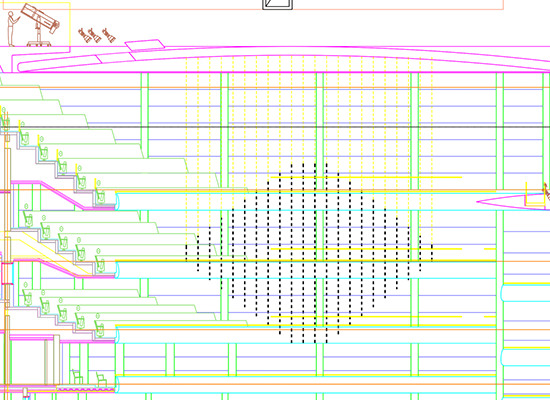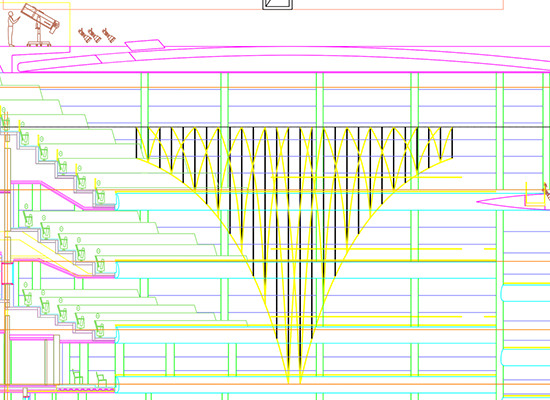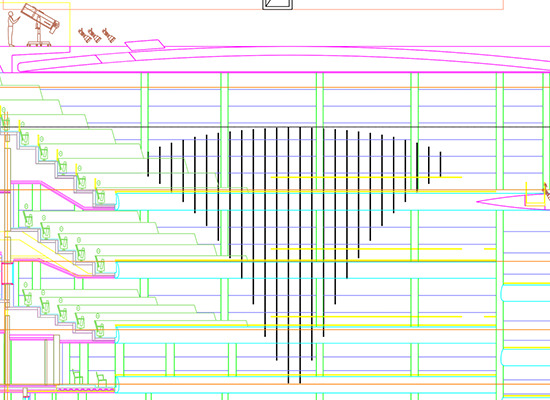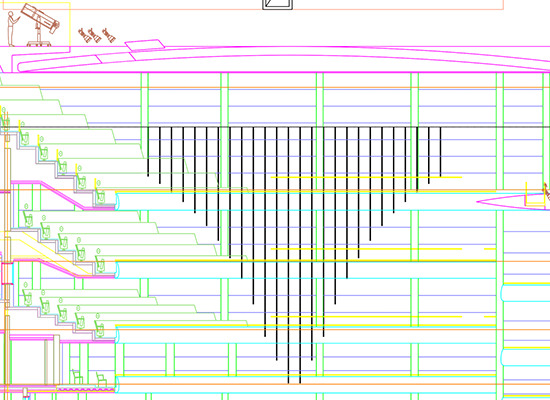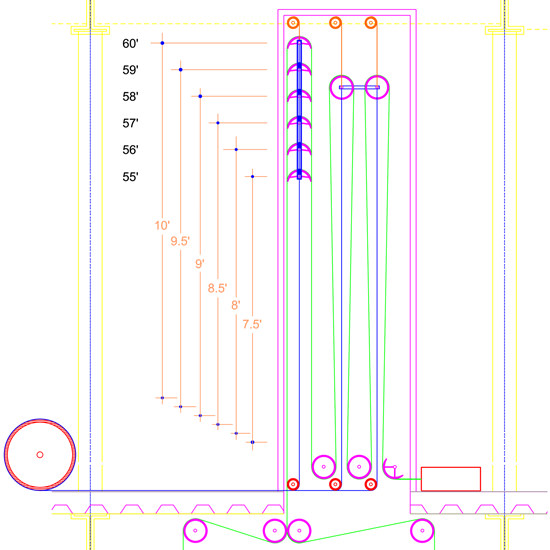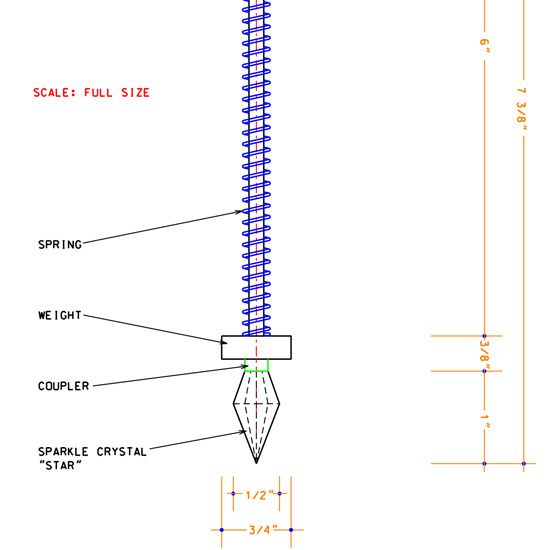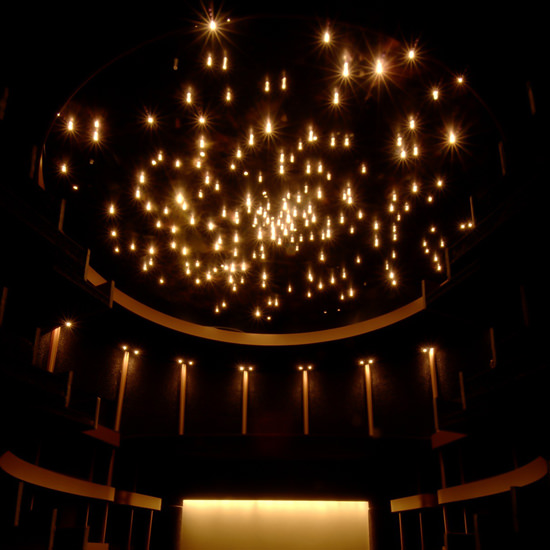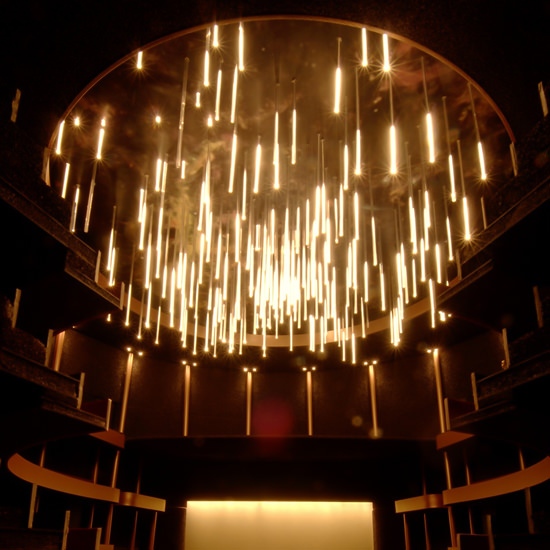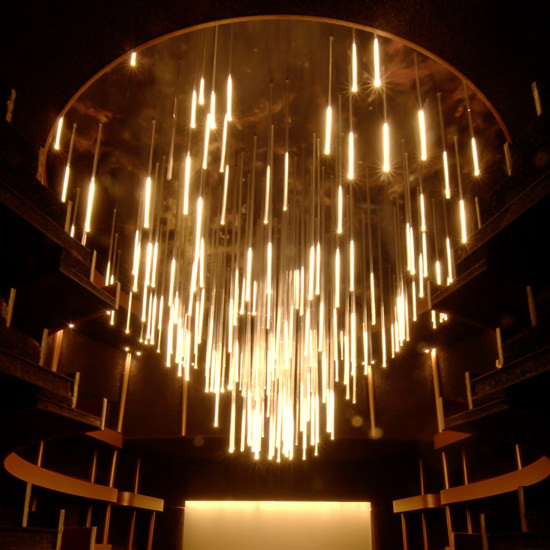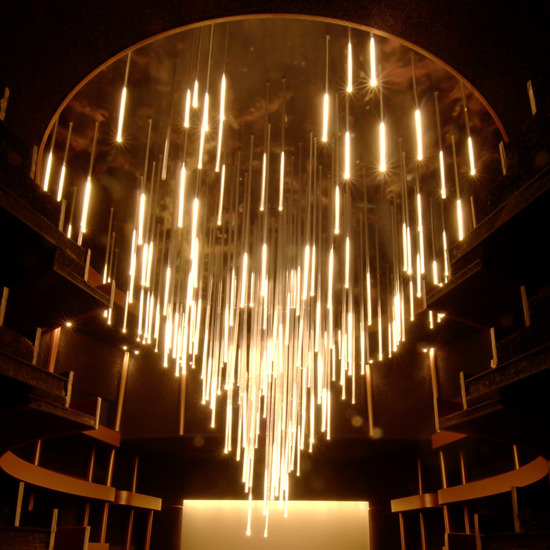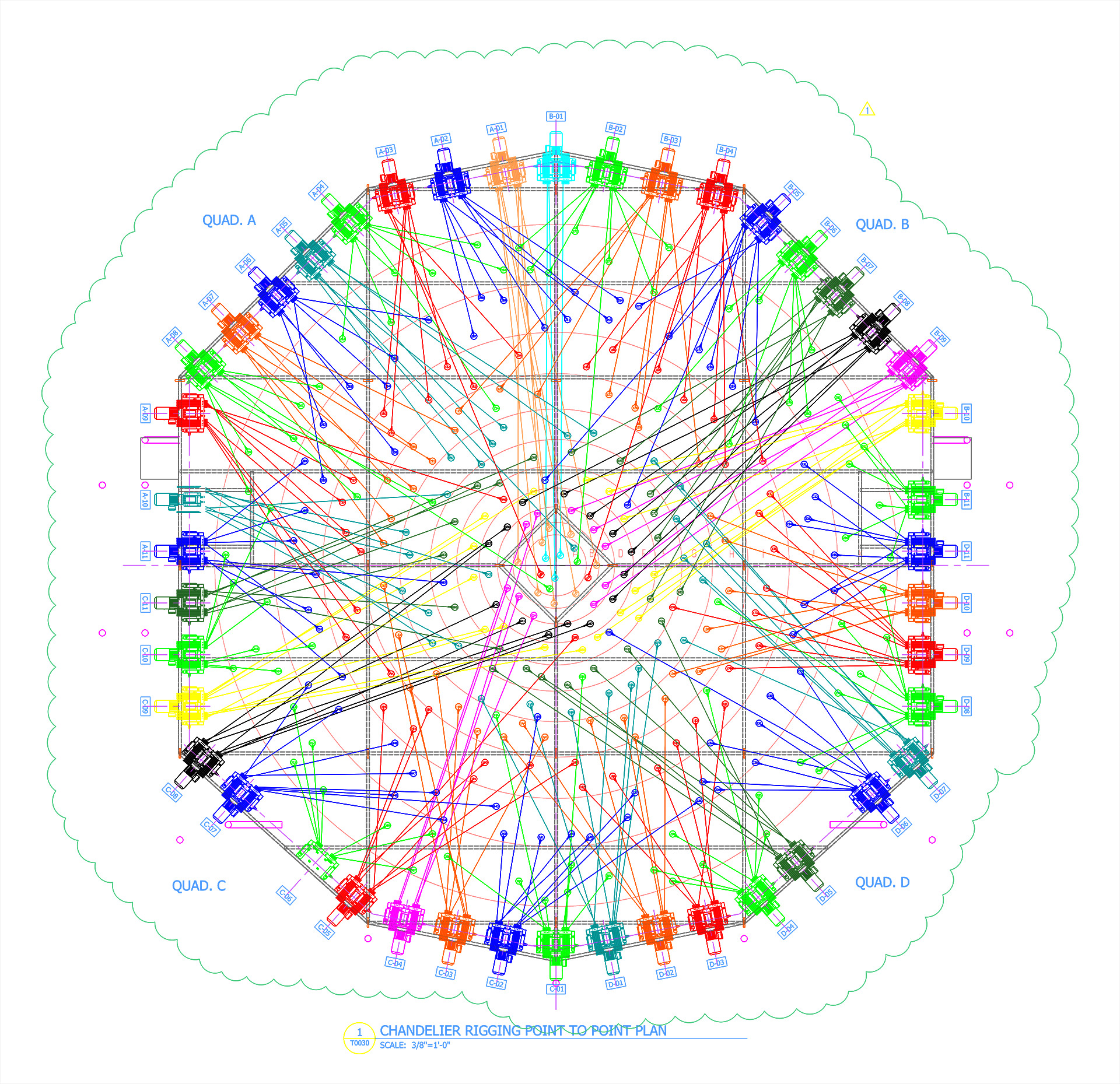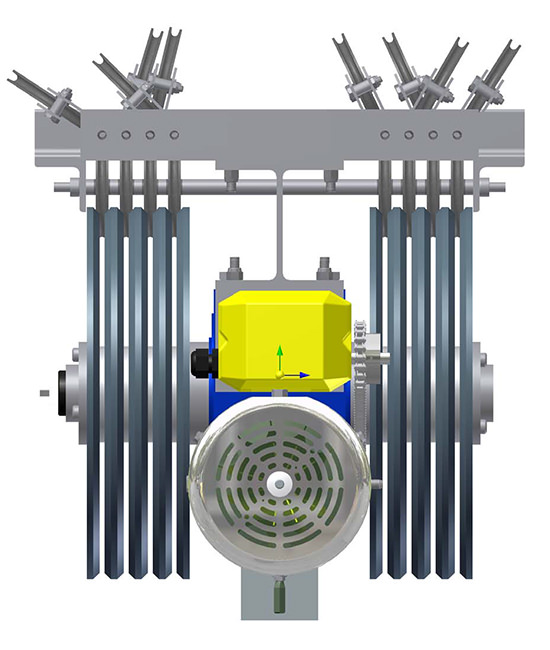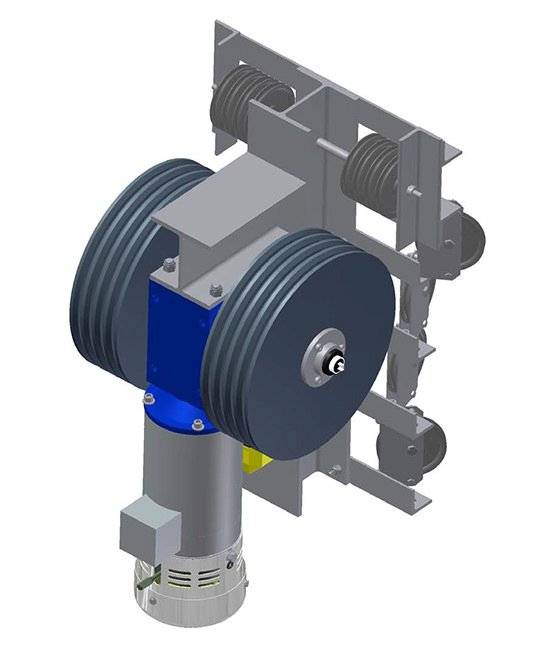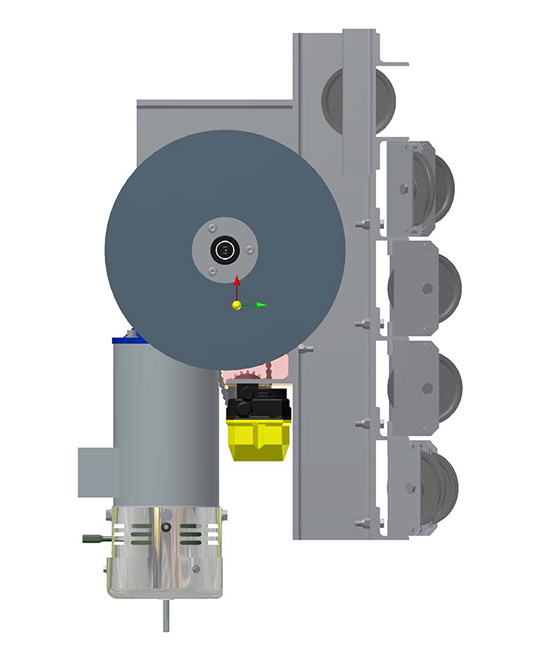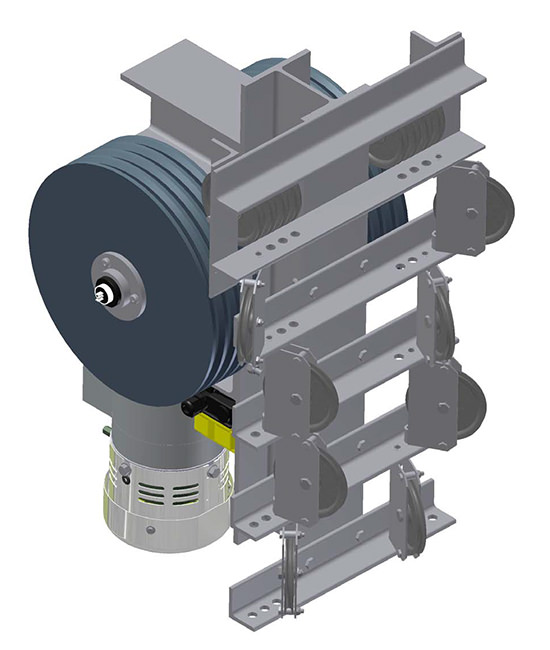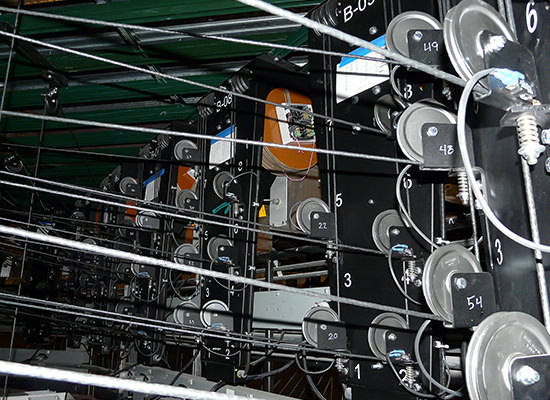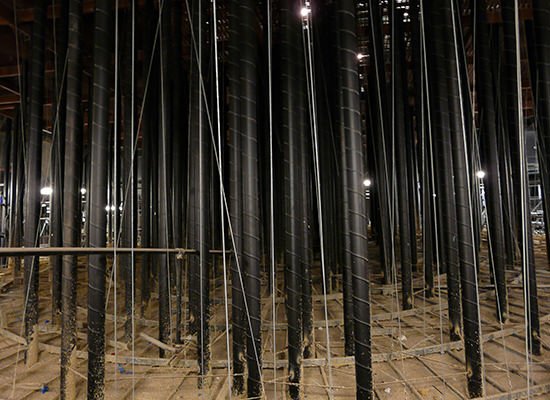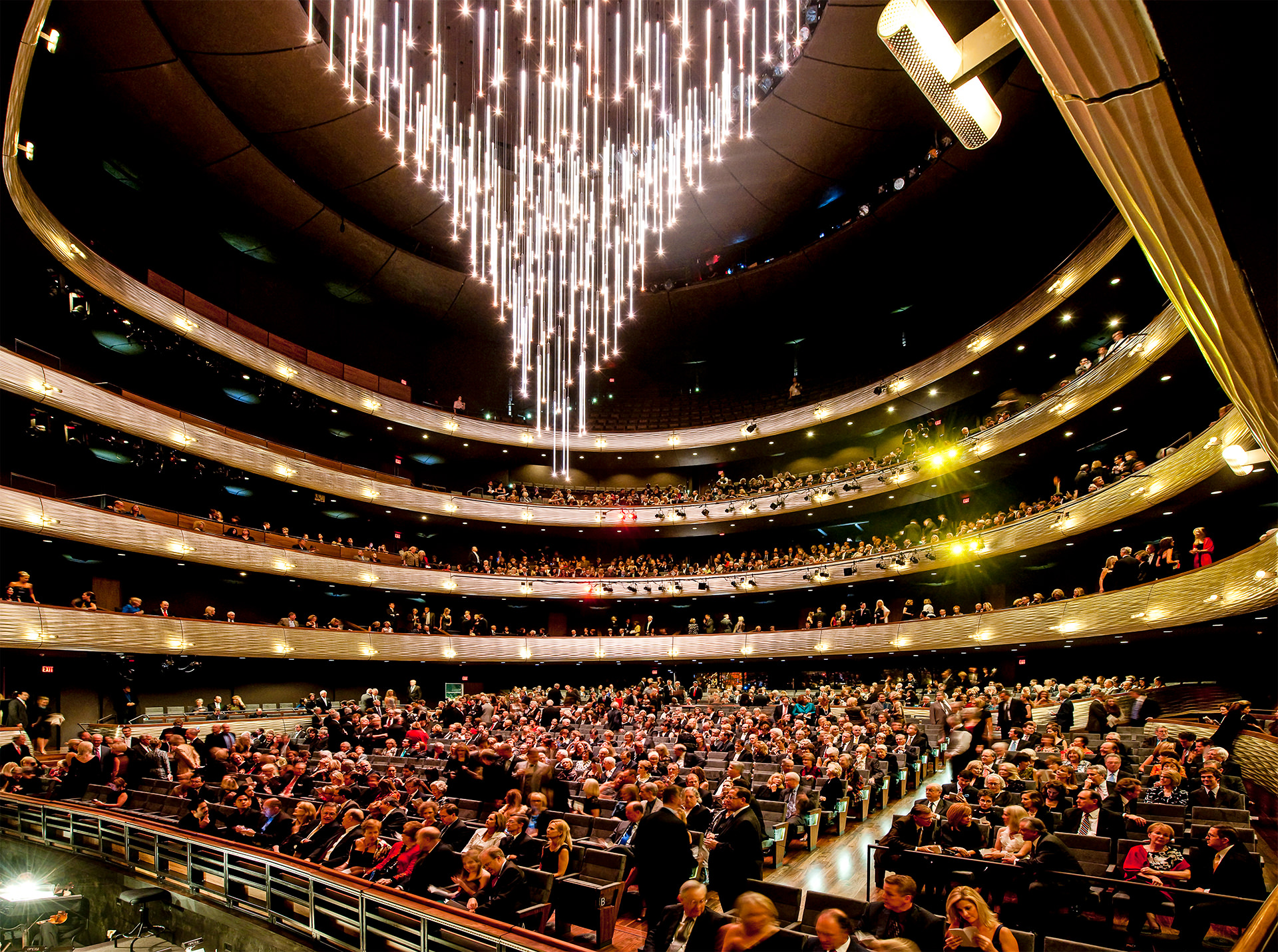The Winspear Opera House Chandelier
Very early on in the schematic phase of the project, my father and I were studying the plans and sections of the Winspear Opera House. Foster + Partners had designed a beautiful ceiling formed with concentric convex rings leaving the center of the ceiling formed by a large dome.
1: F+P Section of the Space, 2: Early Rendering of the Opera House
We thought, it was really quite lovely that housed in the center of this building was an opera house that made you feel like you were sitting in a surreal, outdoor ampitheatre with covered balconies and a central space open to the stars above. We wanted to make the central, partial sphere of the ceiling into a night sky or empyrean tapestry. We looked for images that had different sized stars and then designed different sized lights to light the audience below.
3: Early RCP of Stars without Chandellier, 4: Fixture Cuts Star 1, 5: Fixture Cuts Star 2, 6: Fixture Cuts Star 3
In our research for beautiful starry nights, we studied images from the Hubble Telescope. We chose a few images and then mapped them out in CAD. But, we couldn’t stop looking at these Goyaesque images of space from the Hubble Telescope. The images were so amazing and deep, not just in the profound sense, but in spatial terms and rich with evident movement. We thought, wouldn’t it be amazing if the stars came shooting out of the ceiling into the space.
7: Inspirational Telescope Image 1, 8: Inspirational Telescope Image 2, 9: Inspirational Telescope Image 3
We drew different configurations of the chandelier to see how they would fit into the space. We tried a “Spinning Top” shape, a sphere, a hemisphere, an ellipse, a diamond, and different parabola shapes.
10: Spinning Top, 11: Sphere, 12: Hemispere, 13: Ellipse
14: Diamond, 15: Parabola 1, 16: Parabola 2, 17: Parabola 3
Eventually we settled on the rounded parabola shape because it seemed more natural, more random and organic. Then we tried a parabola formed of parabolas, and a parabola with a rounded top. We settled on the parabola shape. We then had to figure out how many strands would be necessary to express this shape and what lengths they would be. We knew we wanted a huge chandelier, one that would block people’s view of the stage, so the chandelier had to be retractable.
We also thought that the chandelier should be based on side-emitting fibre optic technology because that was the best way to form long glowing lines that projected light in all directions. We then set to designing how these strands of light could be raised and lowered.
18: C.R.E Analysis of Parabola & Hoists
19: Mechanism Plan, 20: Mechanism Down, 21: Mechanism Up, 22: Detail of Star's Fibre End
Foster + Partners loved the chandelier idea, but we had to convince the Client Bill Winspear, that it was idea for which it was worth changing the whole structure of the building in order to house this gargantuan chandelier with its Medieval raising and lowering mechanisms. As a result we had to continue developing the simple starry night rcp and specification while simultaneously working on and developing the chandelier. Something had to be priced, and there was a chance the chandelier would not be possible.
Foster + Partners built a 1:100 model out of foam chore with an actual chandelier in it made out of fibre optic strands that could actually raise and lower. I can remember sanding the fibres to make them side-emitting.
23: Model Of Chandelier 1, 24: Model Of Chandelier 2, 25: Model Of Chandelier 3, 26: Model Of Chandelier 4
They also prepared a pamphlet on the chandelier. This was presented to Bill Winspear, and he fell in love with it. He wanted it done, no matter what it took.
There were only a few people in the world that could pull this off and one of them was J.R. Clancy who specializes in stage rigging. They were actually doing the stage rigging for the opera house, so it was also very convenient.
Clancy put together a team with Robert Degenkolb as the project manager. We began to realize that fibre optic would have its limitations, namely the light could only travel about 40’ and the glass fibre required a large radius on the sheaves, blocks and hoists; so, we decided to go with an LED at the end of an acrylic rod. The LED head was so strong that no graduated frit or pattern on the pure, cast acrylic rods were necessary to make them glow evenly.
Degenkolb worked with Mike Woods of Mike Wood Consulting and Scott Ingham of Ingham Designs, LLC. Scott developed the 6’ acrylic rods with the RGBW LED heads on them, and Mike Woods developed the control system and programming of the whole Chandelier.
27: Clancy's Post Layout Drawings
28: Winch Concept Angle 1, 29: Winch Concept Angle 2, 30: Winch Concept Angle 3, 31: Winch Concept Angle 4
Mockups were conducted to test what quality of acrylic we needed, what the length of the rod could be, and the color of the LEDs. A mockup in Syracuse using 6’ lengths of rope was used to test the actual scale, quantity and configuration of the chandelier. We had originally estimate that 526 strands would be necessary, but eventually the chandelier was made out of 320 strands.
32: Star Maker Machinery 1, 33: Star Maker Machinery 2, 34: Star Maker Machinery 3
Looking at these photos of all the machinery for raising, lowering and housing the chandelier, one can appreciate all the effort that had to be made by all trades to house the chandelier. JR Clancy and Mike Woods Consulting were awarded 2009 ESTA’s “Rock our World” for theatrical technical innovation.
Back in 2007, LEDs were not consistent in color no matter the quality. To insure that no one would ever be able to notice the slightest difference in “white” we used a program that Mike Woods had created for random color changing that he called a “cloud” program. When the chandelier appears to be a static white, all of the LEDs are changing (randomly in changing clouds) between 3000K and 4000K which gives the chandelier glistening effect and prevent anyone from ever finding the LED of a slightly different hue.
So when the chandelier is down, it is an enigmatic white that is fluctuating with clouds of warm white passing through it. Just before the house lights go to half and the overture is starting, the gigantic chandelier begins to slowly rise into the ceiling, essentially dampening itself and slowly dimming. When the house is out, there is only the faint glow of the curtain warmers and above the audience the twinkling stars in the empyrean tapestry of the ceiling.
